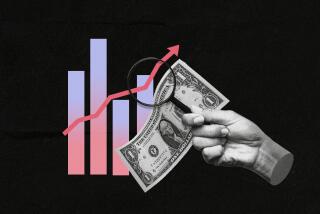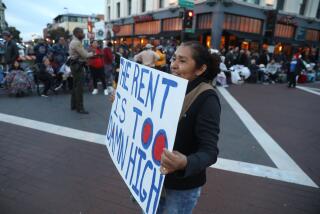Two Cheers for Our Standard of Living : Income: Most Americans have done moderately better in the 1980s, but the poor have fallen farther behind not only the rich but the mainstream as well.
- Share via
The most-scrutinized numbers published by the Census Bureau are the annual poverty and income statistics. In the 1980s, they have become a political battleground. On the one side are those (mainly Democrats) who contend that we face economic stagnation and growing inequality between rich and poor. On the other are those (mainly Republicans) who claim that living standards are steadily rising and that all is well. There ought to be a truce. The latest census report proves both sides half right.
What the report shows is this: The 1980s have not been a period of joyless prosperity, whose benefits have gone only to the filthy rich. But stubborn poverty persists in the midst of plenty--indeed, in the midst of increasing plenty. Let me give you some numbers.
Since 1979, average household income ($34,017 in 1988) has risen about 10% after adjusting for inflation. The gain since 1967 is roughly one-third. This is almost identical to the increase in productivity (output per hour worked).
Higher living standards reflect our ability to produce. The more we produce (cars, airline service or whatever), the more we can consume. For married couples, average incomes ($42,801 in 1988) have increased 15% since 1980 and nearly 40% since 1967. This is not stagnation.
But while most households are moving up, many low-income Americans have hardly made any progress. In 1980, households with income of less than $10,000 were 18.7% of the total. In 1988, they were still 17%. (Again, all figures are adjusted for inflation and are stated in today’s dollars.) It’s possible to choose a variety of definitions of poverty. The conclusion remains the same: The poor are being left further behind.
It’s not only that the gap between the rich and poor is growing. The gap is growing between the poor and the majority of Americans who are, broadly speaking, in the mainstream.
What’s depressing, then, is that the poverty trends remain unchanged. “A rising tide lifts all boats” is one of Americans’ favorite economic faiths. Translation: Prosperity will make everyone better off. But this hasn’t happened. Some possible explanations make the problem look less daunting. Others make it look virtually insoluble. Consider:
Family breakdown --Since 1967, the proportion of households headed by a woman, usually with children, has risen from 8.4% to 11.7% of the total. These households have low incomes and nearly two-fifths of them fall beneath the government’s official poverty line. The situation is the same, though far less extreme, for men heading households with children alone. Since 1967, they’ve risen from about 1.8% to 3.1% of the total.
Immigration --The influx of poor Latinos and other immigrants has increased poverty and tended to reduce average incomes. Since 1980, the number of Latino households has risen by about 50%; the rise in Latino households represented one-fifth of the increase of all households in the1980s. The open question is whether the new immigrants will permanently enlarge the poverty pool or, after a while, climb up the income and social ladder.
Falling earnings of low-skilled workers --By one theory, the poor earnings of many men fosters family breakdown, because they aren’t attractive husbands or cannot hold a family together. In 1973, a man 25 to 34 with a high school diploma earned 82% of what a college graduate of the same age did. By 1987, the high school graduate’s earnings averaged 72% of the college graduate’s. No one knows whether this slippage reflects a demand for higher skills, a cheapening of a high school diploma, the impact of foreign competition . . . or something else entirely.
The trouble with the great debate about general living standards is that it distracts attention from what, if anything, government can do to reduce poverty. There are real and important differences between liberals and conservatives on this question. But that’s where the argument ought to be focused, rather than on the issues of whether living standards are declining. This debate is mainly political theater masquerading as a serious inquiry. Democrats want to stigmatize the economy. Republicans want to glamorize it. Both stereotypes are misleading.
What’s involved is psychology as much as economics. Between World War II and the late 1960s, incomes and living standards rose so dramatically that Americans came to expect rapid and constant improvement as preordained. It wasn’t. The subsequent slowdown is just that--a slowdown. Some groups have struggled more than others. Younger baby boomers have suffered generational congestion. Their relative incomes have been depressed. But most Americans can still expect a gradual rise in living standards. It’s neither calamitous nor glorious.
More to Read
Get the L.A. Times Politics newsletter
Deeply reported insights into legislation, politics and policy from Sacramento, Washington and beyond. In your inbox three times per week.
You may occasionally receive promotional content from the Los Angeles Times.










